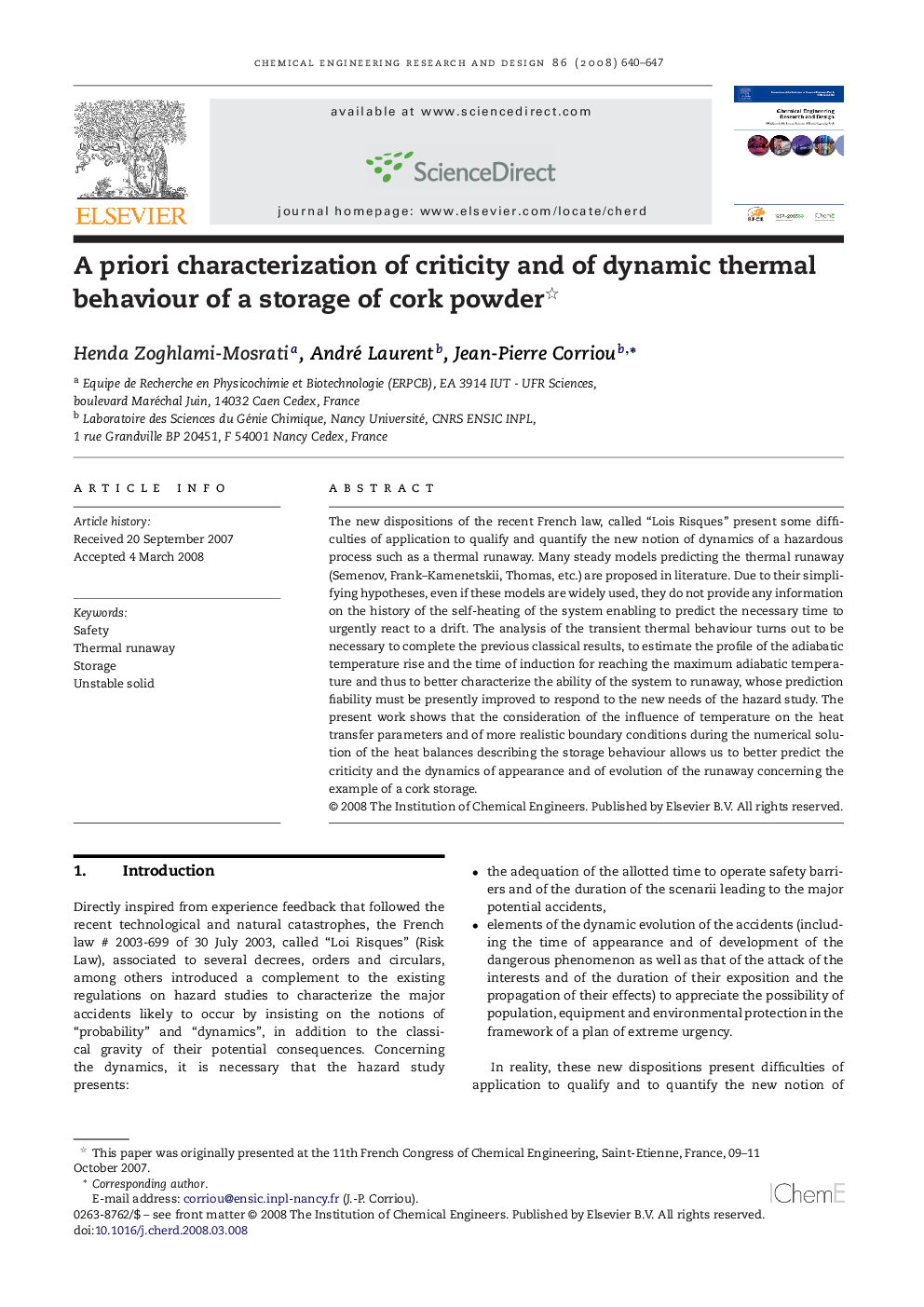| Article ID | Journal | Published Year | Pages | File Type |
|---|---|---|---|---|
| 622486 | Chemical Engineering Research and Design | 2008 | 8 Pages |
The new dispositions of the recent French law, called “Lois Risques” present some difficulties of application to qualify and quantify the new notion of dynamics of a hazardous process such as a thermal runaway. Many steady models predicting the thermal runaway (Semenov, Frank–Kamenetskii, Thomas, etc.) are proposed in literature. Due to their simplifying hypotheses, even if these models are widely used, they do not provide any information on the history of the self-heating of the system enabling to predict the necessary time to urgently react to a drift. The analysis of the transient thermal behaviour turns out to be necessary to complete the previous classical results, to estimate the profile of the adiabatic temperature rise and the time of induction for reaching the maximum adiabatic temperature and thus to better characterize the ability of the system to runaway, whose prediction fiability must be presently improved to respond to the new needs of the hazard study. The present work shows that the consideration of the influence of temperature on the heat transfer parameters and of more realistic boundary conditions during the numerical solution of the heat balances describing the storage behaviour allows us to better predict the criticity and the dynamics of appearance and of evolution of the runaway concerning the example of a cork storage.
